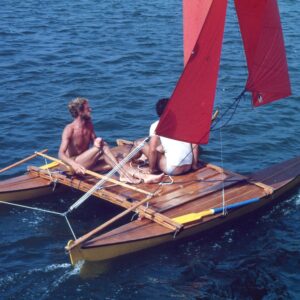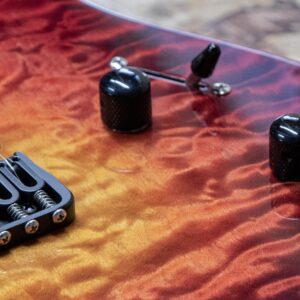Projects: Surfing The World
According to Luke Young, his boards are built with science and timing and that’s what makes them perfect for world-class surfers across the globe. Epoxycraft finds out which epoxy for surfboards he’s using.
Luke Young has made surfboards for the world-class elite and also for beginners, intermediaries and more. He’s been building bespoke surfboards for over 19 years from his factory near Plymouth.
A keen surfer from the age of six, when his parents took him and his brother to Cornwall at every opportunity, Luke’s passions for surfing and the environment were born. He’s now using Entropy Resins® epoxy to create his beautiful, eco-friendly, high-performance boards alongside recycled EPS blanks.

Bespoke creations and the best epoxy for surfboards
“I mainly build for the bespoke end of the market,” says Luke. “It makes all the difference to the end-user having a board that’s designed for them. It’s not like picking up a pair of football boots – we’re all completely different. I’m a little fella at 5ft 7ʺ but I’m 10 and a quarter stones of lead, rather than feathers. That affects the way I surf. We all surf completely differently.
“I start the build process by understanding where the customer is at, whether they’re beginner, intermediate or on top of their game. I think about what they want to do, where they want to go and what style of board they need to make that work. Every wave is different, whether it breaks over sand or rock, plus the wave height. This is where the rocker – the bend of the board, becomes absolutely critical for whatever wave you’re surfing.”

Choices of board
When Luke started surfing there were three classes of boards and surfers were pushed toward either shortboards (harder to ride), Mini Mal (a not too cumbersome learner board) or longboards.
“Now it’s a minefield of choices with length, width and thickness,” Luke says. “There are so many variations. While people can buy off the shelf, the click and buy surfboards don’t always do what it says on the tin for that person. It’s a science to shape a board but it’s worth the investment (from only £575) as it improves performance for each individual.”
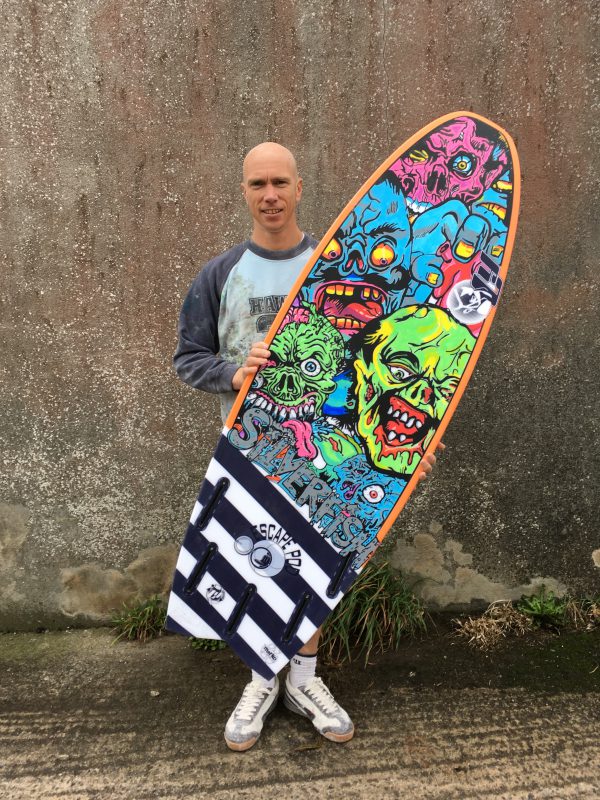
World-class intentions
Luke found that The West Country “got under his skin” and now he’s aiming to protect the seas that he loves as much as he can, using bio-based Entropy Resins epoxy. It’s the best epoxy for surfboards.
“Barry Mottershead – one of the stand out big wave surfers in the UK – introduced me to Entropy Resins epoxy,” Luke explains. “I’ve been making boards for him for ten years. He’s very environmentally conscious – Barry wanted recycled EPS eco-blanks from the USA and from here I found out about Entropy Resins epoxy. These two go together like a well-oiled machine.
“I understood Entropy Resins epoxy, I got it straight away. I wouldn’t go back. As an epoxy I love it, the colour and consistency are really good. Half the battle is understanding it and how to use it. The strength in my boards comes from perfect epoxy saturation in first-class surfboard fibreglass cloth, really good blanks and really good epoxy. I haven’t bought any other epoxy since I first used Entropy Resins.”
Luke’s process for building an epoxy surfboard
The first thing to note is that the resin and hardener have to be a really good temperature for consistency.
My laminating room runs at 20-25°C all year round so that I have consistent temperatures with my resin and hardener.
I use a mixture of hand shaping and CNC machine pre-shapes. After the blank’s chosen, hand shaping shortboards takes 1.5 – 2 hours, pre-shapes about 1/2 hr and longboards take 3/4 hour depending on the complexity of the custom shape.
Once the shape’s there, the board is sprayed with water-based acrylic paint onto the EPS blank as spirit-based paint would ‘eat’ the foam.
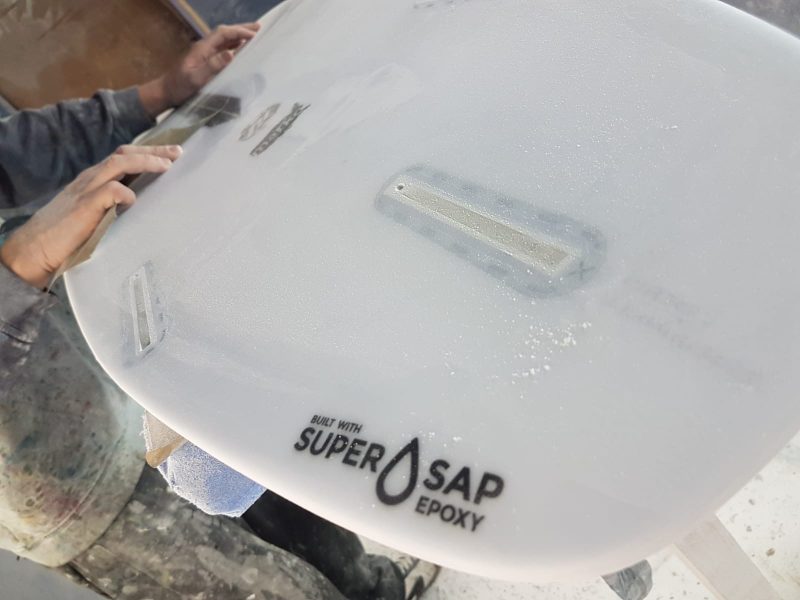
Laminating
I laminate my EPS blanks with Entropy Resins SuperSap with a combination of 6oz and 4oz surfboard glass fibre cloth using a squeegee to wet the cloth out and create the perfect bond between cloth and board.
The bottom is layered up first and then I grind the lap (from around the rail to edge of decks). Where the fibreglass lap meets the bare foam, I carefully grind the edge down with an angle grinder and a sanding pad, making sure I don’t touch the foam.
Two layers of cloth are applied on deck, one to the rail line and one lapped underneath. Once I’ve achieved perfect saturation, I wait for it to go off before painting a sand coat over the laminate. I do the top first which dribbles and drains underneath. The next day, I grind the dribbles away.
I use masking tape to tape off the rail when sand coating the bottom, repeat the process and when it’s gone off, I remove the tape to reveal the smooth line where the tape is pulled.
The board then needs to be sanded smooth going down finer grades of finishing paper before being finished by wet sanding by hand.
“If you start with really good blanks, really good cloth and resin, apply science and craftsmanship, you get the best results in the workshop and on the water.”
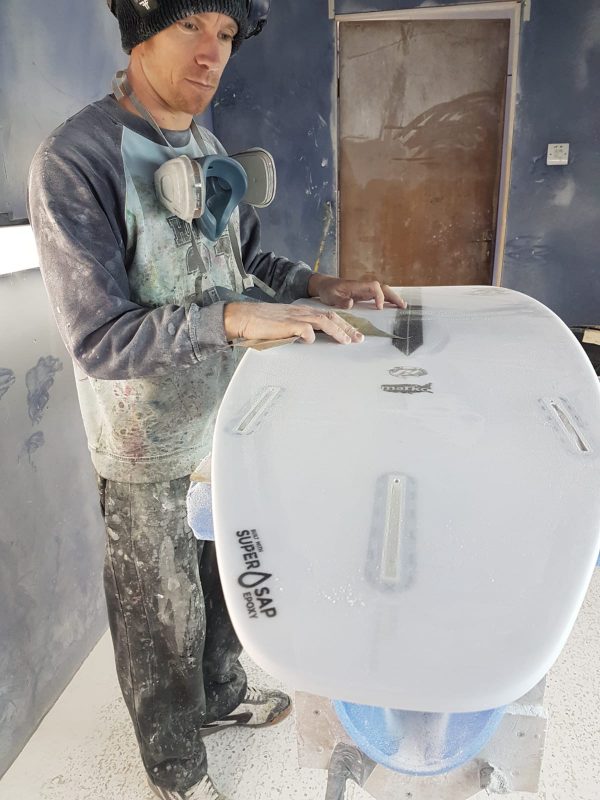
Contact wetcoldsalty@hotmail.com and find out more about which epoxy for surfboards he recommends, or visit www.lukeyoungshapes.co.uk

